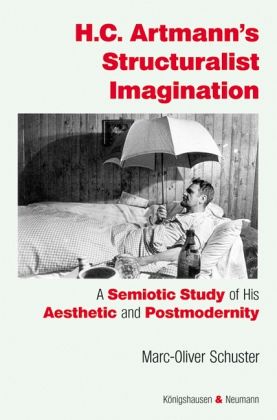Nicht lieferbar

H.C. Artmann's Structuralist Imagination
A Semiotic Study of His Aesthetic and Postmodernity
Versandkostenfrei!
Nicht lieferbar
Schuster argues that H. C. Artmann's literary work is composed of a structuralist imagination that corresponds with Saussurean semiology and the perspective of synchrony. Following a discussion of relevant contexts such as biography, scholarship, Austrian culture and methodology, Artmann's aesthetic principles are considered under the headings of "synchrony," "arealism" and "smallness." These principles account for the three sign-categories that are characteristic of his work: aliens, angels, and monsters. By defining postmodernity as bi-paradigmatic irony, Artmann's strong potential for postm...
Schuster argues that H. C. Artmann's literary work is composed of a structuralist imagination that corresponds with Saussurean semiology and the perspective of synchrony. Following a discussion of relevant contexts such as biography, scholarship, Austrian culture and methodology, Artmann's aesthetic principles are considered under the headings of "synchrony," "arealism" and "smallness." These principles account for the three sign-categories that are characteristic of his work: aliens, angels, and monsters. By defining postmodernity as bi-paradigmatic irony, Artmann's strong potential for postmodernity is applied to the prose texts dracula dracula, tök ph'rong süleng, and Grünverschlossene Botschaft.



